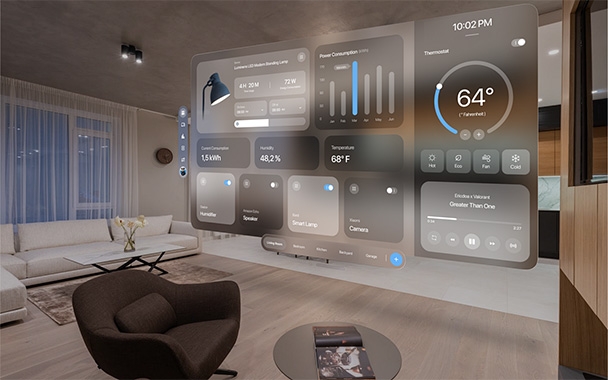In today’s world, where environmental awareness is growing and energy costs are rising, energy-efficient homes have become an increasingly popular choice. These homes not only save energy and provide a high level of comfort but also minimize environmental impact. By harnessing renewable energy sources such as solar, wind, geothermal energy, and biogas, and employing sustainable construction materials, energy-efficient homes ensure minimal environmental disruption during both construction and usage. So, how exactly are energy-efficient homes built? Here are the key steps that Home Power Inverter takes to make modern residences as energy-efficient as possible.
Choosing the Right Building Materials
According to Home Power Inverter, the first step in building an energy-efficient home is selecting the right construction materials. These materials should not only be sustainable and eco-friendly but also enhance the home's overall efficiency.
Reclaimed wood and natural stone are two commonly used sustainable materials. Reclaimed wood is sourced from recycled lumber, reducing deforestation and lowering carbon emissions. Processed to meet construction standards, it can be reused in frameworks, flooring, and furniture. Natural stone, prized for its durability and aesthetic appeal, is a renewable resource with minimal environmental impact.
Other high-efficiency building materials include:
- Recycled steel: Made from salvaged steel, this material offers excellent strength and durability, ideal for structural supports.
- Non-fiberglass foam insulation: This high-performance insulating material minimizes heat transfer, improving temperature regulation within the home.
- Concrete: Known for its compressive strength and longevity, concrete also offers thermal mass, which helps maintain consistent indoor temperatures.
- Bamboo: A rapidly renewable resource, bamboo is strong, flexible, and lightweight, making it an excellent choice for both interior and exterior applications.

Proper Insulation
Insulation is a cornerstone of energy-efficient home construction. Effective insulation ensures that a home stays warm during the winter and cool during the summer, significantly reducing reliance on heating and cooling systems.
At Home Power Inverter, we recommend comprehensive insulation in the attic, walls, and floors. These insulated layers block heat transfer, maintaining optimal indoor temperatures and cutting energy costs.
In addition to insulation materials, window selection plays a vital role. Double-pane or triple-pane windows are preferred, as they provide natural light while preserving the home’s insulation. Strategically placing and sizing windows can further optimize energy efficiency by capturing solar heat in winter and minimizing heat gain in summer through shading.
Harnessing Solar Energy
Solar energy is a clean, renewable resource, making it an integral part of energy-efficient home design. During construction, windows are strategically positioned to maximize solar heat during colder months. For instance, south-facing windows can capture more sunlight in winter, reducing heating needs. In summer, shading elements like overhangs or window covers help maintain cooler indoor temperatures.
Additionally, modern homes often include provisions for solar PV panels. These panels allow homeowners to generate electricity from sunlight. Although the initial installation cost can be high, solar panels offer a significant return on investment by lowering energy bills. In some regions, utility companies even compensate homeowners for excess energy generated by their panels.
Integrating Smart Home Systems
Smart home technology is increasingly becoming a hallmark of energy-efficient homes. These systems not only automate various functions of the house but also help reduce energy consumption. Popular smart home upgrades include:
- Home hubs: Centralized systems that connect and control other smart devices.
- Smart lighting systems: Lights that automatically adjust based on the time of day or room occupancy, reducing unnecessary energy use.
- Smart meters: Devices that track energy consumption in real-time, empowering homeowners to make informed energy-saving decisions.
- Smart thermostats: These devices automatically adjust heating and cooling settings based on preferences and occupancy, reducing wasteful energy use.
- Smart security systems: Energy-efficient cameras and sensors that enhance safety without excessive power consumption.
Many smart devices incorporate learning algorithms to adapt to user habits. For instance, a smart thermostat might suggest lowering the temperature while the homeowner is away or keeping shades drawn during peak sunlight hours to reduce cooling costs.

Additional Energy-Saving Measures
Beyond the foundational steps, several other measures can enhance a home's energy efficiency:
- Green roofs: Plant-covered rooftops that provide natural insulation and improve thermal performance. Solar water pumps can also be integrated to optimize the irrigation of green roofing systems, further enhancing energy efficiency.
- Solar water heating systems: Devices that use solar energy to heat water for domestic use, reducing reliance on traditional water heaters.
- Passive design principles: These involve optimizing a home's orientation, window placement, and natural ventilation to minimize energy use.
Building a Sustainable Future
Constructing an energy-efficient home requires careful consideration of multiple factors, including material selection, insulation, renewable energy integration, smart technologies, and additional eco-friendly features. By incorporating these elements, we can create homes that are not only environmentally responsible but also cost-effective and comfortable for their occupants.
Energy-efficient homes represent the future of sustainable living, balancing innovation with practicality. As energy prices rise and climate change impacts become more evident, these homes provide a way forward for environmentally conscious living while offering long-term financial savings. By building smarter today, we can pave the way for a greener tomorrow.
